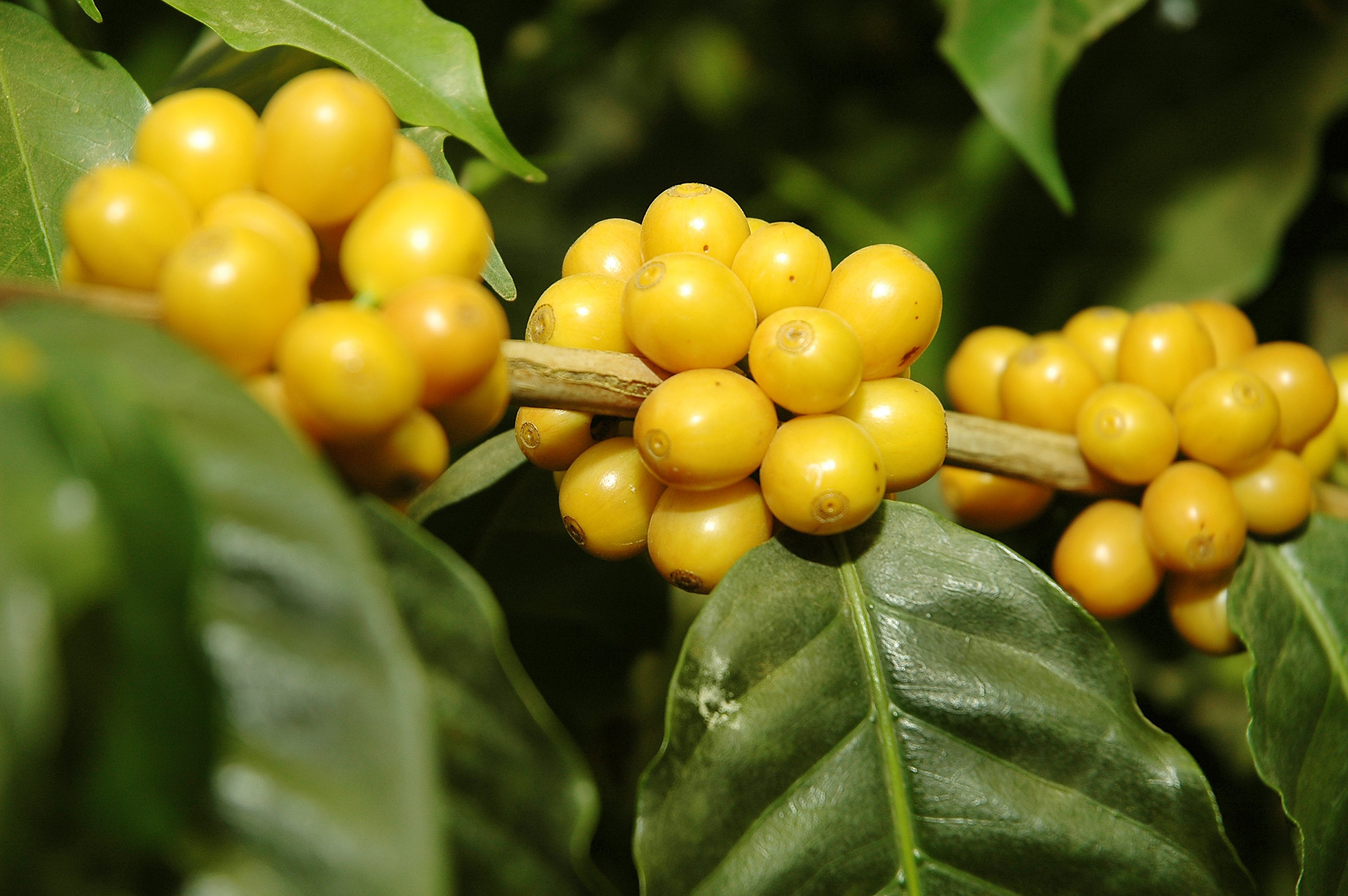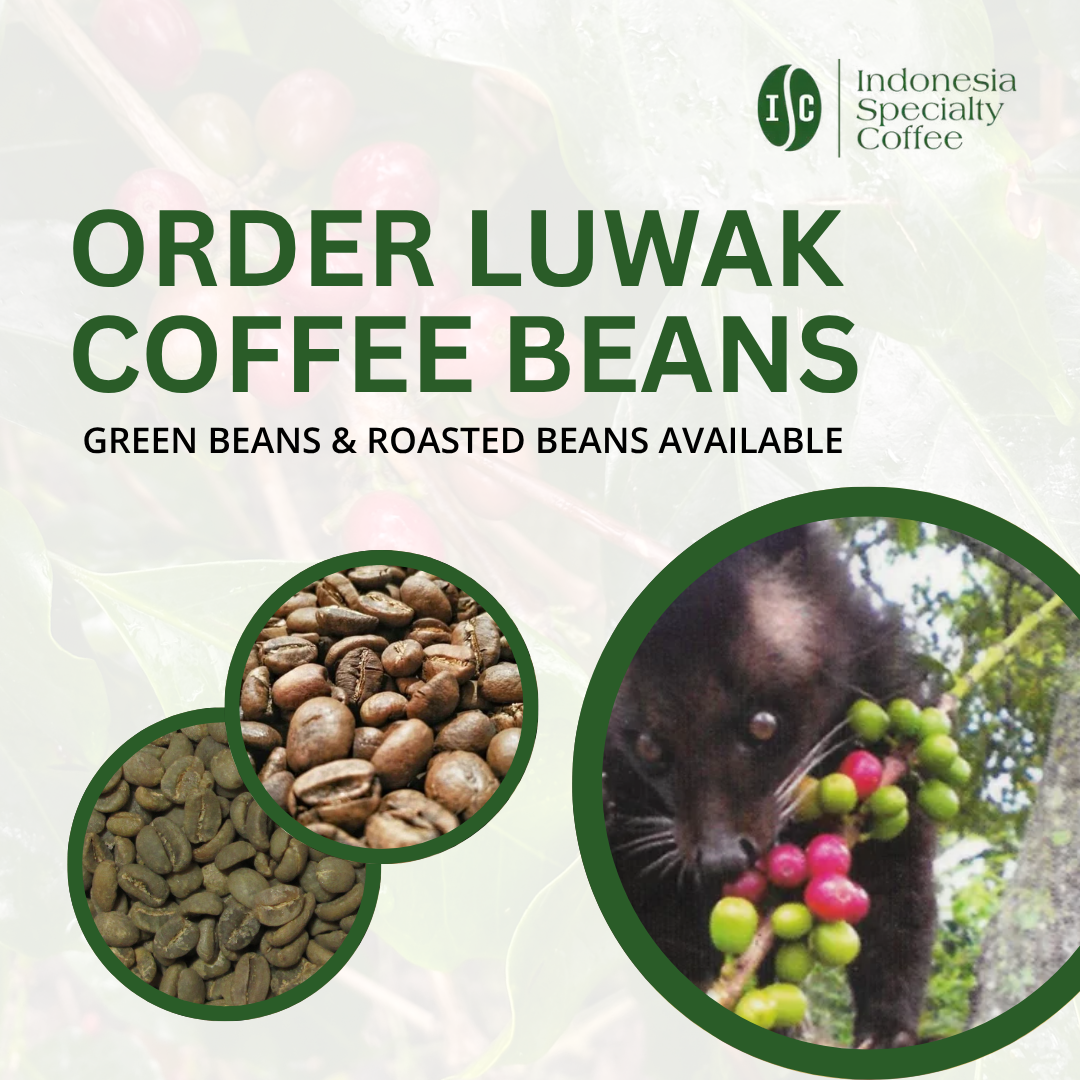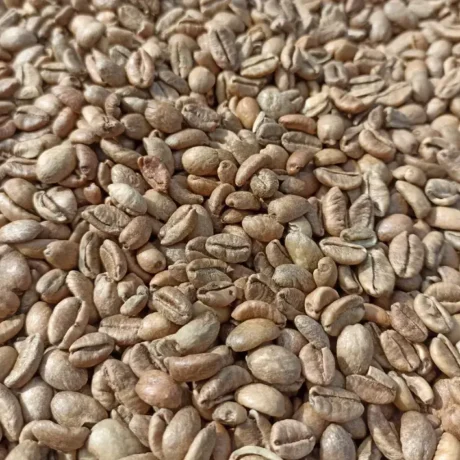1. Introduction to Bourbon Coffee
In the vast and intricate world of specialty coffee, few names resonate with as much historical significance and esteemed quality as Bourbon. A true cornerstone of Coffea arabica, this venerable variety stands as a testament to coffee’s rich past and its continuous evolution.
Born from the fertile lands and careful cultivation practices of centuries past, Bourbon is celebrated globally for its inherent sweetness, balanced acidity, and a complexity that delights palates. More than just a bean, it represents a foundational lineage from which countless other beloved cultivars have emerged, shaping the very landscape of coffee production worldwide.
This article will explore the comprehensive story of Bourbon coffee, delving into its fascinating origins, defining characteristics, nuanced flavor profiles, and the distinct qualities of its most prominent sub-varieties, revealing why it remains an enduring symbol of excellence in the cup.
2. The Genesis of Bourbon: Origin and History
The remarkable journey of Bourbon coffee begins not in the bustling coffee farms of today but in the ancient highlands of Yemen, the birthplace of coffee cultivation. From these revered lands, coffee seeds were brought by French missionaries to a remote island in the Indian Ocean in the early 18th century.
This island, then known as Bourbon Island (and now called Réunion), became the crucible where the variety we know today truly began to take shape. Through generations of natural selection and adaptation to its new volcanic soil and climate, the original Yemeni stock evolved, developing the distinct genetic characteristics that define Bourbon coffee.
By the mid-19th century, the descendants of these Réunion Island plants embarked on another grand voyage, spreading first to Brazil and subsequently throughout the coffee-growing regions of Latin America, Africa, Asia, and, importantly, Indonesia. Its adaptability and the promise of superior cup quality quickly made it a favored cultivar among pioneering coffee farmers.
This widespread dissemination cemented Bourbon’s role as a cornerstone of global coffee production. Moreover, its genetic lineage proved incredibly robust and fertile, giving rise to numerous other key arabica cultivars through natural mutations and intentional breeding, such as Caturra, Mundo Novo, and Pacas, further underscoring its profound and lasting impact on the world of coffee.
3. General Characteristics of Bourbon Coffee Plants
The Bourbon coffee plant, while diverse in its sub-varieties, possesses a set of fundamental characteristics that broadly define it within the Coffea arabica species. Typically, Bourbon plants are of medium height, exhibiting a compact, conical shape with a sturdy main stem and numerous secondary branches that grow at acute angles. Their leaves are generally dark green and oval-shaped, often slightly larger than those of the venerable Typica variety.

When it comes to fruit, Bourbon cherries are characteristically round, maturing to various hues of red, yellow, or even pink/orange, depending on the specific sub-variety. In terms of productivity, Bourbon varieties generally offer a good yield, often producing 20-30% more than Typica under similar conditions, making them a more appealing choice for many farmers.
However, this advantage comes with a trade-off: Bourbon plants are generally susceptible to major coffee diseases such as coffee leaf rust (CLR) and coffee berry disease (CBD), as well as common pests. This necessitates careful agricultural management and often makes them less resilient in challenging environments compared to some modern hybrid cultivars.
For optimal growth, Bourbon thrives in specific conditions. It performs best at altitudes ranging from 1,100 to 2,000 meters above sea level, where the cooler temperatures allow for slower cherry maturation and more complex flavor development. A temperate climate with distinct wet and dry seasons is ideal, requiring annual rainfall of 1,500–2,000 mm. Bourbon prefers fertile, well-draining, and nutrient-rich soils, often thriving in volcanic earth that provides essential minerals. These specific environmental requirements, combined with its inherent disease susceptibility, mean that successful Bourbon cultivation demands diligent care and a suitable terroir.
4. The Bourbon Flavor Profile: A Classic Standard
The allure of Bourbon coffee lies significantly in its celebrated flavor profile, often considered a classic benchmark for quality within the Coffea arabica species. Across its various expressions, Bourbon consistently delivers a harmonious and sophisticated cup. The overall cupping experience is typically characterized by a notable sweetness, a bright and clean acidity, and a balanced, often creamy body. This combination contributes to a smooth and highly enjoyable drinking experience that appeals to a wide range of palates.
Digging deeper into the sensory notes, Bourbon coffees frequently reveal a rich tapestry of flavors. Common descriptors often include:
- Sweetness: Notes of caramel, chocolate (ranging from milk chocolate to richer dark chocolate), brown sugar, and honey are frequently present, contributing to a smooth, sugary finish.
- Acidity: The acidity is typically bright and balanced, often with citric or malic qualities that provide a refreshing zest without being overwhelming.
- Body: Bourbon is well-regarded for its medium to full body, often described as silky or creamy, providing a pleasant mouthfeel.
- Fruit Notes: A diverse range of fruit notes can emerge, including red berries (like cherry or raspberry), stone fruits (apricot, peach), and sometimes a subtle citrus zest.
- Other Notes: Beyond these, you might encounter hints of nuts (pecan, roasted almond), vanilla, delicate floral undertones, or even a nuanced spicy finish.
It’s crucial to note that while these are general characteristics, the final flavor profile of any Bourbon coffee is profoundly influenced by two key factors: terroir and coffee processing methods. The specific altitude, soil composition, and microclimate of its growing region can dramatically accentuate certain notes – for example, high-altitude Bourbons often exhibit more pronounced acidity and floral complexity.
Similarly, the processing method—whether it’s washed (fully depulped and fermented), natural (dried in the cherry), or honey (partially depulped with mucilage left on)—will impart distinct characteristics, influencing the coffee’s sweetness, body, and the clarity of its fruit notes. This interplay ensures that while Bourbon maintains its classic core, each specific lot offers a unique discovery.
5. Diversity Within Bourbon: Exploring Its Key Sub-Varieties
While the general characteristics and flavor profile of Bourbon coffee provide a foundational understanding, the variety truly reveals its fascinating complexity through its distinct subtypes. These variations, often arising from natural mutations or specific selections by farmers, offer unique expressions of the Bourbon lineage, each prized for different attributes.
5.1. Red Bourbon (Bourbon Rojo)
Distinguishing Characteristics: Red Bourbon is perhaps the most archetypal and widely recognized of the Bourbon family. Its most defining feature is the vibrant, ruby-red color of its ripe cherries, which stand out prominently against the dark green foliage. This sub-variety is known for its robust growth and wide adaptability, allowing it to thrive in various coffee-growing environments.

Flavor Profile: Red Bourbon is celebrated for delivering a classic, well-rounded cup. It typically offers a fuller body and a pronounced, comforting sweetness, often reminiscent of caramel and chocolate. Flavor notes frequently include rich red fruit (such as cherry and apple), complemented by pleasant nutty undertones. Its acidity is bright and balanced, contributing to a consistently clean and satisfying finish.
Where is it Found?: Red Bourbon boasts an extensive global footprint. It is incredibly prominent throughout Latin America, serving as a backbone for coffee production in countries like Colombia, El Salvador, Guatemala, Honduras, Peru, and Brazil. In East Africa, it is a key variety in Rwanda, Burundi, and Tanzania. Its presence also extends to parts of Asia, including Indonesia and India, where it contributes significantly to regional coffee profiles.
Significance: As the most common and widely planted Bourbon sub-variety, Red Bourbon serves as a benchmark for quality in numerous regions. Its reliability and consistently excellent cup profile make it a foundational and highly valued choice for farmers and roasters worldwide.
5.2. Yellow Bourbon (Bourbon Amarelo)
Distinguishing Characteristics: Yellow Bourbon stands out immediately due to the striking bright yellow or orange-yellow color of its ripe cherries, a visual departure from its red counterpart. This unique characteristic is believed to be the result of a natural genetic mutation of Red Bourbon, or possibly a cross involving a yellow-fruited Typica variety, first observed in Brazil. The plant morphology is otherwise largely similar to other Bourbon types, with a medium stature and good branching, though it shares the family’s general susceptibility to common coffee diseases.

Flavor Profile: Yellow Bourbon coffees are highly prized for their distinctive cup profile, which often differs pleasantly from Red Bourbon. They typically exhibit a lighter body and a notably brighter, more vibrant acidity, frequently presenting with citric qualities. The sweetness is often clean and delicate, accompanied by pronounced yellow and stone fruit notes such as apricot, peach, and sometimes hints of banana or tropical fruits. Subtle nutty or delicate floral undertones can also be detected, contributing to a cup that is often described as refreshing and elegant.
Where is it Found?: Yellow Bourbon has its strongest association and most significant cultivation in Brazil, particularly in renowned coffee-growing regions like Cerrado Mineiro and Alta Mogiana in the state of São Paulo. While its presence is not as widespread globally as Red Bourbon, it can also be found in limited quantities in other Latin American countries that have adopted Brazilian varietals.
Significance: In Brazil, Yellow Bourbon is a signature variety, celebrated for its unique flavor profile and its resilience to certain harvesting methods, including mechanical harvesting common in larger Brazilian farms. Its distinct sensory attributes make it a sought-after offering in the specialty coffee market, providing a unique expression of the Bourbon lineage.
5.3. Pink Bourbon (Bourbon Rosado / Orange Bourbon)
Distinguishing Characteristics: Pink Bourbon is a truly unique and highly celebrated anomaly within the Bourbon family, instantly identifiable by its distinct pinkish-orange or salmon-colored ripe cherries. Its exact genetic origin is still debated; it’s believed to be either a natural hybrid cross between Red and Yellow Bourbon or a spontaneous mutation that somehow managed to maintain genetic stability. Regardless of its precise lineage, Pink Bourbon has gained significant acclaim for its exceptional cup quality, despite sharing the typical Bourbon plant morphology and susceptibility to diseases like coffee leaf rust, meaning it still requires careful attention from farmers.

Flavor Profile: This is where Pink Bourbon particularly shines, offering a remarkably complex and often exquisite sensory experience that sets it apart. It is highly valued for its vibrant acidity and often delicate, yet pronounced, floral notes such as rose, jasmine, or orange blossom – a hallmark of this variety. Beyond the florals, it typically presents a fascinating combination of sweet red fruit (cherry, raspberry, cranberry) and sometimes surprising tropical fruit notes (guava, passionfruit, papaya). Undertones of vanilla, citrus zest, and a clean, elegant, often tea-like finish further contribute to its highly sought-after complexity and balance.
Where is it found?: Pink Bourbon is predominantly associated with Colombia, particularly from the high-altitude regions of Huila, where it was first identified and popularized. Its cultivation is meticulously managed here, with farmers embracing its potential for premium prices. Beyond Colombia, some specialty coffee farms in Ecuador and Costa Rica have begun cultivating Pink Bourbon, recognizing its exceptional cup profile. There’s also limited experimental cultivation in other regions, including in parts of Ethiopia, where its unique genetic markers, potentially linking it to some Ethiopian landraces, are being explored.
Significance: Pink Bourbon has rapidly become one of the most highly sought-after varieties in the ultra-specialty coffee market. Its unique aesthetic, combined with an unparalleled flavor complexity, allows it to command premium prices, making it an economically significant choice for farmers dedicated to high-quality production. It represents the pinnacle of Bourbon’s diverse genetic potential.
5.4. Bourbon Pointu (Laurina)
Distinguishing Characteristics: Bourbon Pointu, also known as Laurina, is arguably the most unique and historically significant, albeit extremely rare, of the Bourbon sub-varieties. Its name, “Pointu” (French for “pointed”), perfectly describes its small, elongated, and distinctly conical cherries with pointed ends, a stark contrast to the typically round cherries of other Bourbons. The plant itself is also notable, being smaller in stature with narrower, more delicate leaves resembling those of a laurel bush (hence “Laurina”). The most remarkable feature of Bourbon Pointu, however, is its naturally very low caffeine content, typically ranging from 0.4% to 0.6%, significantly lower than the 1.2% to 1.5% found in most other Coffea arabica varieties. This genetic trait makes it a naturally decaffeinated coffee. It is a delicate plant, notoriously low-yielding and more susceptible to environmental stresses and diseases than its Bourbon relatives.
.jpg?v=0)
Flavor Profile: The cup profile of Bourbon Pointu is as unique as its botanical characteristics, directly influenced by its low caffeine and delicate nature. It is renowned for an extreme, intrinsic sweetness and a remarkable absence of bitterness. The acidity is typically bright and delicate, often evoking a clean, elegant sensation. Flavor notes frequently include nuanced floral aromas, subtle apricot, peach, and other stone fruit notes, sometimes a hint of spicy complexity, and a clean finish that can be almost tea-like in its clarity and refinement. Its lower bitterness allows for a very pure and sweet expression of its inherent flavors.
Where is it Found?: Bourbon Pointu is an extremely exclusive variety, primarily cultivated on its original home, Réunion Island, located in the Indian Ocean (where it was rediscovered and revived after nearly disappearing). Due to its delicate nature, low yield, and specific climatic requirements, its cultivation remains very limited. There have been minimal, highly controlled efforts to introduce it to other suitable microclimates, such as parts of New Caledonia, but it remains exceptionally rare globally.
Significance: Bourbon Pointu occupies a niche as one of the world’s most exclusive and expensive coffees. Its historical importance as a pure, naturally mutated Bourbon, coupled with its highly prized unique flavor and naturally low caffeine content, makes it a true connoisseur’s delight. Its rarity and the challenges of its cultivation contribute significantly to its legendary status and premium price.
6. Cultivation and Processing Considerations for Bourbon
Cultivating Bourbon coffee, regardless of its specific sub-variety, demands a careful and dedicated approach from farmers. While renowned for its quality, the Bourbon plant is not without its agricultural challenges, particularly concerning its susceptibility to diseases.
General Cultivation Practices: Due to Bourbon’s vulnerability to major diseases like coffee leaf rust (CLR) and coffee berry disease (CBD), proactive disease management is crucial. This often involves rigorous pruning to ensure good air circulation, appropriate fertilization to maintain plant health, and sometimes the strategic use of disease-resistant rootstocks or organic preventative treatments. Shade management is also vital; while Bourbon can tolerate some sun, partial shade often helps in managing temperatures, reducing plant stress, and contributing to slower cherry maturation, which can enhance cup quality.
Harvesting: The pursuit of quality in Bourbon coffee heavily relies on selective hand-picking. Since coffee cherries ripen at different rates, especially on a single branch, only the fully ripe, optimally colored cherries (red, yellow, or pink, depending on the variety) are harvested. This meticulous process is labor-intensive but critical for ensuring that only the highest quality, sweetest fruit contributes to the final coffee, leading to a more uniform and desirable flavor profile.
Processing Methods: Once harvested, Bourbon cherries undergo various processing methods, each significantly influencing the final cup.
- Washed (Wet) Processing: This is the most common method for Bourbon. Cherries are de-pulped, and the mucilage (sticky layer) is removed through fermentation and subsequent washing. This method typically results in a cleaner, brighter cup with pronounced acidity and clearer expression of the coffee’s inherent fruity and floral notes, often preferred for specialty Bourbons like Pink Bourbon.
- Natural (Dry) Processing: In this method, the entire coffee cherry is dried with the fruit intact. This allows the fruit’s sugars and flavors to infuse into the bean, often leading to a fuller body, lower acidity, and more intense, sweeter fruit flavors, sometimes with notes of fermentation or “booziness.” Yellow Bourbon in Brazil, for example, is frequently natural processed, contributing to its creamy, sweeter profile.
- Honey (Pulped Natural) Processing: This method involves de-pulping the cherry but leaving a portion of the mucilage on the bean to dry. The amount of mucilage left can vary (yellow, red, black honey), influencing the final cup. Honey-processed Bourbons often present a balance between the clarity of a washed coffee and the sweetness of a natural, with enhanced body and fruit notes without excessive fermentation.
- Semi Wash Process (Giling Basah/Wet Hulled): This semi-washed method is used primarily for Indonesian beans and produces the country’s signature bold, low-acidity flavor. Among Southeast Asia’s unique coffee processing methods, wet-hulling stands out for its distinctive earthy profile. How does it work? Cherries are pulped and briefly fermented. Beans are hulled at high moisture (~30%). Then they undergo a second sun-drying stage. Flavor profile: Heavy-bodied, low-acid, earthy, and spicy.
Challenges: Despite its revered status, cultivating Bourbon comes with inherent challenges. Its susceptibility to disease often means higher input costs for farmers for treatments and preventative measures. The demand for specific processing techniques to highlight its delicate flavors can be labor-intensive and weather-dependent. Furthermore, compared to some modern, high-yielding hybrid varieties, Bourbon’s yield consistency can sometimes be a concern, requiring farmers to balance quality aspirations with economic viability.
7. Challenges and Future of Bourbon Coffee
Despite its esteemed status and celebrated cup quality, the cultivation of Bourbon coffee varieties faces a persistent array of challenges that threaten its widespread viability in a changing world. These hurdles demand innovative solutions and continued dedication from coffee producers and researchers alike.
Agricultural Hurdles: The primary challenge for Bourbon growers lies in the plant’s inherent susceptibility to major coffee diseases, most notably coffee leaf rust (Hemileia vastatrix) and coffee berry disease (CBD). These diseases can decimate crops, leading to significant yield losses and economic hardship for farmers. Managing these vulnerabilities often necessitates increased investment in preventative measures, resistant rootstocks, or chemical treatments, raising production costs. Furthermore, the impacts of climate change—including unpredictable rainfall patterns, rising temperatures, and more frequent extreme weather events—pose an increasing threat, as Bourbon thrives within specific and increasingly volatile climatic envelopes. The demand for meticulous, selective hand-picking for specialty quality also means high labor intensity and associated costs, which can be challenging for farmers in regions with rising labor expenses.
Research and Development: To mitigate these challenges, significant efforts are underway in coffee research. Breeders are actively working on developing more resilient Bourbon-descended varieties that retain the beloved cup quality while offering improved resistance to diseases and better adaptation to changing climatic conditions. This often involves cross-breeding with hardier genetic material or exploring new cultivation techniques. There’s also ongoing research into optimized agronomic practices, such as precision fertilization, water management, and integrated pest management, to support healthy Bourbon plants.
Continued Relevance: Despite the obstacles, Bourbon’s legacy and its consistently excellent cup quality ensure its continued relevance and demand in the specialty coffee market. Roasters and consumers alike continue to seek out its characteristic sweetness, balanced acidity, and complex flavor profiles. Its historical significance and its role as a parent to many successful modern cultivars further cement its place in the industry. For regions like Indonesia, where specialty coffee is a growing sector, carefully managed Bourbon cultivation offers premium market opportunities, albeit with the need for vigilant plant health strategies. The high prices commanded by exceptional Bourbon lots, particularly for unique expressions like Pink Bourbon and Bourbon Pointu, provide a strong incentive for farmers willing to invest in the necessary care.
8. Conclusion
From its ancient origins in Yemen and its formative cultivation on Réunion Island, the Bourbon coffee variety has journeyed across continents to become an undisputed pillar of the specialty coffee world. Its legacy is etched into the very genetic fabric of modern coffee, serving as the foundational ancestor for countless other beloved cultivars that define the industry today. Bourbon’s enduring appeal lies in its remarkably consistent ability to produce a cup characterized by inherent sweetness, bright, balanced acidity, and a satisfyingly full body, interwoven with classic notes of caramel, chocolate, and a spectrum of nuanced fruit and floral complexities.
As we’ve explored its distinct sub-varieties – the widespread Red Bourbon, the unique Yellow Bourbon of Brazil, the exquisite and rare Pink Bourbon of Colombia, and the historically precious, low-caffeine Bourbon Pointu – it becomes clear that Bourbon is not merely a single entity but a vibrant family, each member offering a unique sensory experience while retaining the core excellence of its lineage.
Despite facing significant agricultural challenges, particularly its susceptibility to diseases, Bourbon coffee remains highly valued and actively cultivated in premier coffee-growing regions across Latin America, Africa, and Asia, including here in Indonesia. The dedication of farmers, combined with ongoing research and development, ensures that this esteemed variety continues to contribute significantly to local economies and global coffee culture. Bourbon coffee, with its rich history and diverse expressions, is more than just a beverage; it is a testament to the pursuit of quality, a symbol of heritage, and a continuous delight for roasters, baristas, and discerning coffee enthusiasts worldwide. Its place as a true classic in the lexicon of fine coffees is, and will remain, firmly secured.







